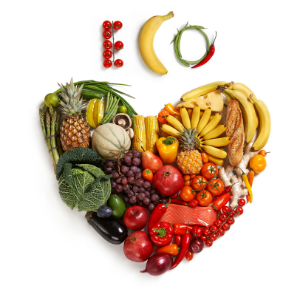It's no secret that the way we eat has a significant impact on the environment. Many foods that come from animals require a lot of energy and resources to produce, causing our carbon footprint to rise. Now the question is: can certain foods help reduce that environmental footprint? The answer is yes! Below, we will discuss climate-conscious foods, why they are important, and how you can make your diet more environmentally friendly.
What Are Climate-Conscious Foods?
Climate-conscious foods have been grown or raised in an environmentally sustainable way. This means they have been produced using methods that do not cause harm to the environment, such as using pesticides or fertilizers. They also require less water and energy to produce than other foods. Eco-friendly foods include fruits, vegetables, grains, nuts, and seeds.
Why Climate-Conscious Foods Are Important
The way we eat has a major impact on the environment. The food we consume requires energy and resources to produce, transport, and prepare. It also generates waste throughout its life cycle. In fact, the average American diet creates tons of carbon dioxide emissions per year, which is why it's so important to make conscious choices about the food we eat.
Climate-conscious foods are important because they can help reduce our carbon footprint. By choosing more sustainable foods, we can positively impact the environment. Climate-conscious foods are also typically more nutritious than other foods since high amounts of meat are linked to future health and heart problems. Therefore, sustainable foods like fruits and vegetables are better for your overall health.

Tips To Make Your Menu More Environmentally Friendly
Want to make your restaurant’s menu more sustainable but don’t know how? Here are a few simple tips for making food offerings environmentally friendly:
- Buy local and seasonal produce: This helps reduce the amount of energy required to transport food from farms to grocery stores.
- Choose organic foods: Organic farming practices are better for the environment and often result in tastier food.
- Reduce food waste: Make an effort to make all the food you purchase and compost any scraps.
- Support sustainable businesses: Source environmentally conscious ingredients and integrate sustainable practices.
- Less meat and dairy: Consider Meatless Mondays menu options or more vegetarian options.
- When offering meat items: Choose local, organic, and humanely raised options.
- Increase plant-based food options: Plant-based foods such as fruits, vegetables, whole grains, and legumes help reduce carbon footprint.
Most Sustainable Foods
There are a few foods that are sustainable and climate conscious. These foods require fewer resources to produce and have less environmental impact than other options. Below is a list of the most sustainable foods.
-
Fruits & Vegetables
It is a no-brainer that organic fruits and vegetables are environmentally-friendly foods. When harvesting fruits and vegetables organically, the least amount of pesticides and fertilizers are used. Avoiding the overuse of these harmful chemicals benefits the overall health of the soil. To also reduce food miles, it is best to source local fruits and vegetables that are also in season.
-
Organic Grains
Organic grains like quinoa, oats, and farro are less resource-intensive to produce than animal products. Also, they require far less water than other foods which is vital when trying to make more eco-conscious choices. Compared to other crops, grains withstand a variety of weather conditions, are easily transported, and can be stored for long periods of time.
-
Nuts & Seeds
Nuts and seeds are a way of adding protein to a dish or meal without meat. However, nuts and seeds have a high water footprint, which means they require large amounts of water to produce. Seeds require less than nuts, making them more sustainable to harvest. If you want to make a more climate-conscious choice when choosing nuts, select more peanuts, chestnuts, and walnuts since they hold one of the lowest amounts of water footprints.
-
Beans, Pulses, & Lentils
Some of the market's most easily accessible sustainable foods are beans, lentils, peas, and legumes. They require little water to produce and are nitrogen fixers. Legumes store nitrogen in the soil for other plants to use once they finish their life cycles. Due to their natural nitrogen functions, they usually do not require any synthetic nitrogen fertilizers. They are also perfect as a source of plant-based protein, contributing to a decrease in meat consumption.
-
Mussels
Compared to other seafood, mussels can be produced in a sustainable way. Mussels don’t require land or feeding to produce and can be harvested in the water. They also don’t require a large amount of by-catch or affect ecosystems. Interestingly, mussels remove carbon dioxide from the ocean to grow their shells successfully, therefore reducing greenhouse gasses. Plus, mussels are also a great alternative for protein if you're looking for a meat-free or more sustainable lifestyle.
-
Mushrooms
A lot of people are unaware of the low environmental impact mushrooms have on the planet. Mushrooms can make use of by-products recycled from other crops as compost to grow. In addition, mushrooms use a low amount of water, under two gallons per pound, and have little contribution to CO2 emissions. Unlike other crops, they don’t require much land to produce.
-
Seaweed
The agricultural production of seaweed has the least amount of negative impact on the environment. Not to mention, it is filled with good nutritional value. Seaweed does not need any fertilizers to grow, resulting in less pollution. Naturally, seaweed is produced by getting all its nutrients from the surrounding water. They retain high amounts of phosphorus and nitrogen from the water, which can improve agricultural runoffs. Most importantly, seaweed grows quicker than land plants, which helps to decrease CO2 when harvested in a conscious manner.

How To Serve Climate-Conscious Foods
Your menu items may use ingredients like mushrooms and organic grains that require less water or land to be produced. However, using foam plates or containers to serve or pack your eco-conscious meals harms the planet. To help reduce your impact on the environment, consider packaging or serving meals using compostable or biodegradable products. Using products that are derived from natural materials does not add to air, water, and land pollution.
Climate-Conscious Foods Make a Difference
By making smart choices about food, we can all make a difference in the fight against climate change. Opting for climate-conscious food options is one of the most effective ways to do this. Not only are they better for the environment, but they're also more nutritious and delicious. So next time you're updating your menu, make an effort to choose more eco-friendly foods. Your guests’ taste buds and the planet will thank you.








